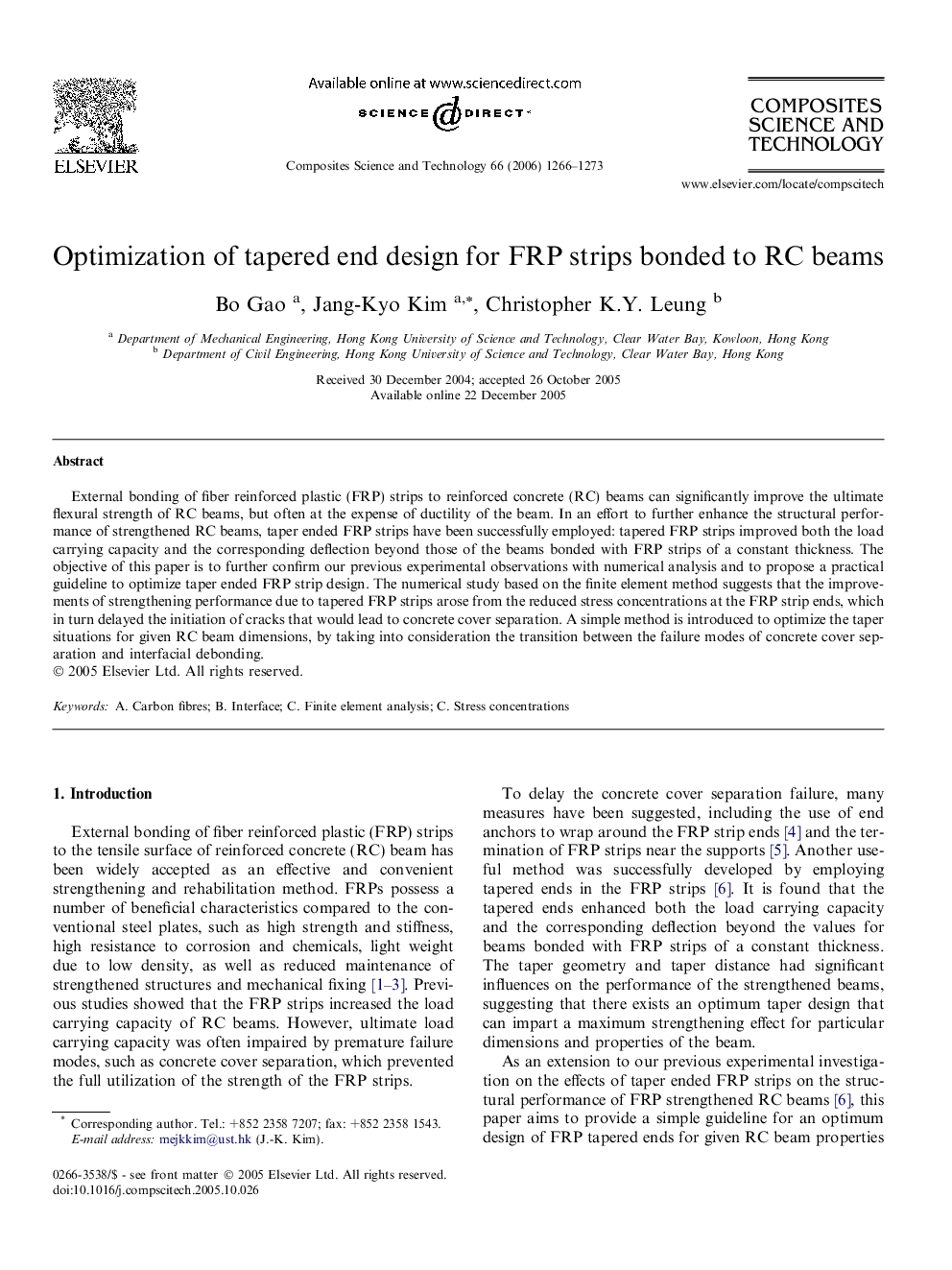| Article ID | Journal | Published Year | Pages | File Type |
|---|---|---|---|---|
| 822938 | Composites Science and Technology | 2006 | 8 Pages |
External bonding of fiber reinforced plastic (FRP) strips to reinforced concrete (RC) beams can significantly improve the ultimate flexural strength of RC beams, but often at the expense of ductility of the beam. In an effort to further enhance the structural performance of strengthened RC beams, taper ended FRP strips have been successfully employed: tapered FRP strips improved both the load carrying capacity and the corresponding deflection beyond those of the beams bonded with FRP strips of a constant thickness. The objective of this paper is to further confirm our previous experimental observations with numerical analysis and to propose a practical guideline to optimize taper ended FRP strip design. The numerical study based on the finite element method suggests that the improvements of strengthening performance due to tapered FRP strips arose from the reduced stress concentrations at the FRP strip ends, which in turn delayed the initiation of cracks that would lead to concrete cover separation. A simple method is introduced to optimize the taper situations for given RC beam dimensions, by taking into consideration the transition between the failure modes of concrete cover separation and interfacial debonding.
